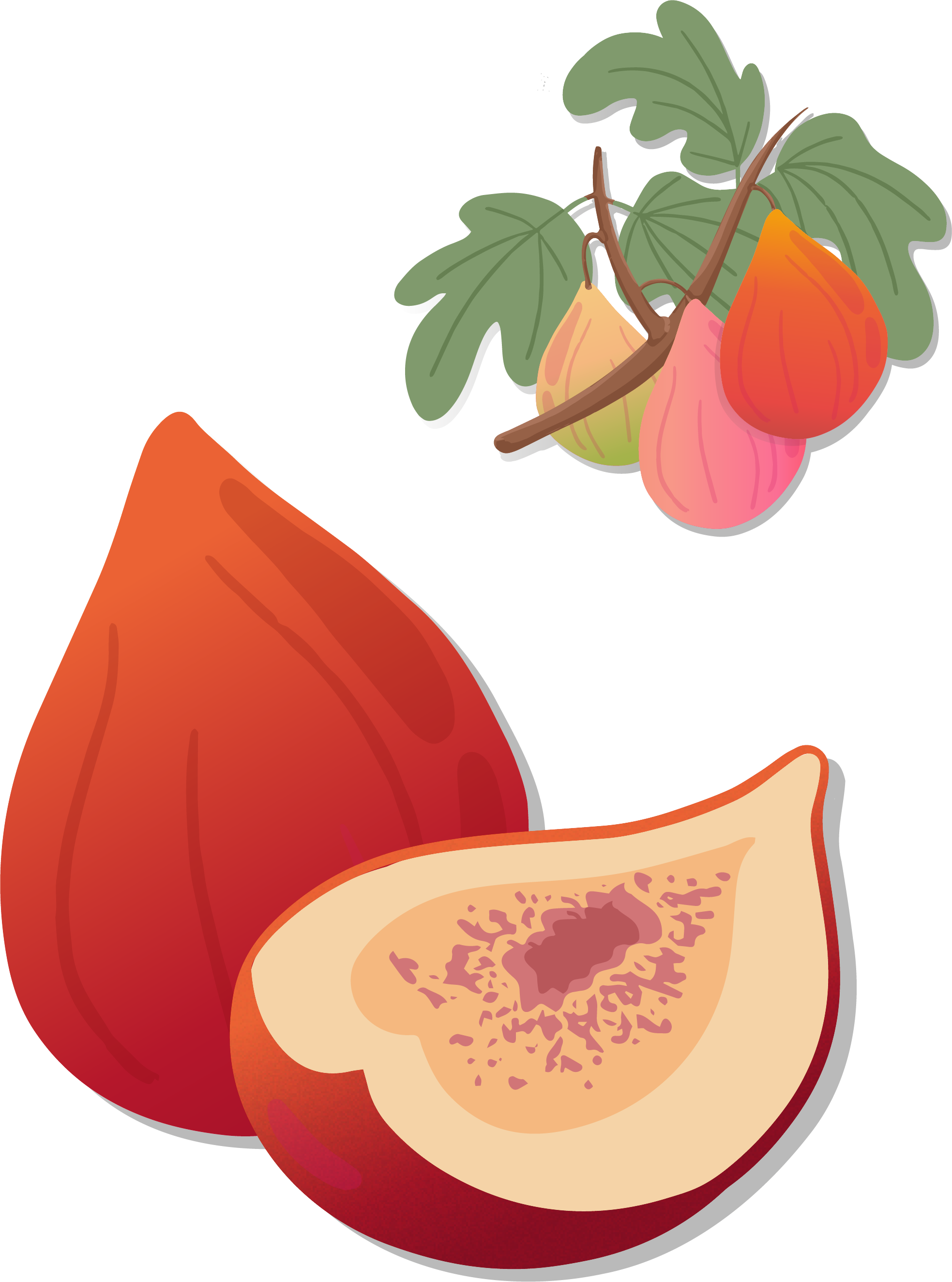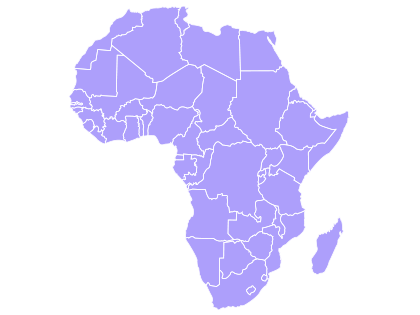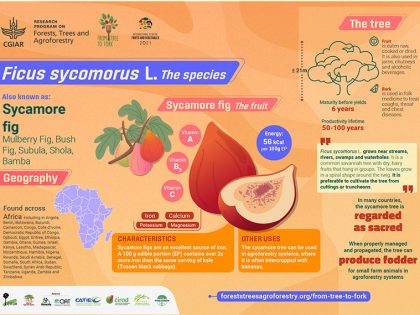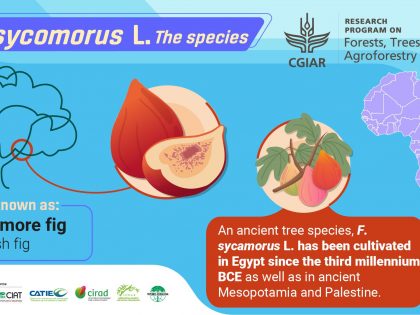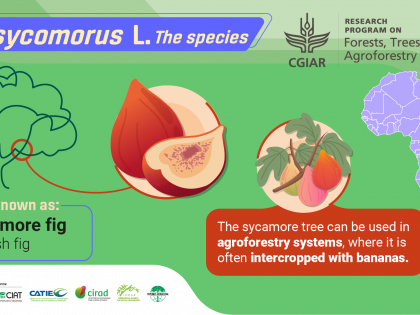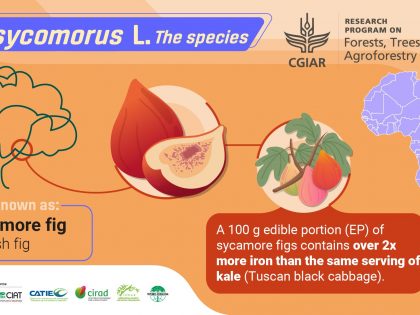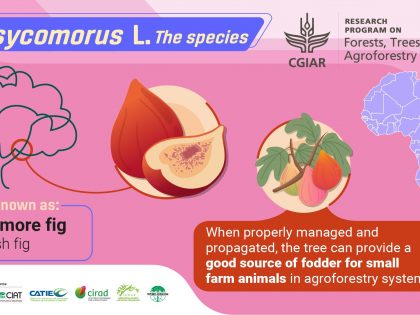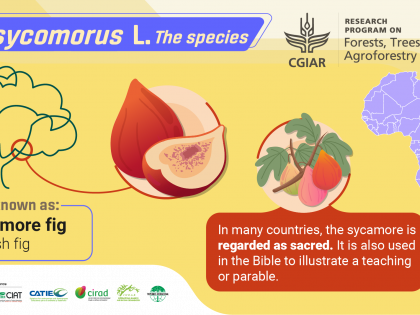Geography
Found across Africa including in Angola, Benin, Botswana, Burundi, Cameroon, Congo, Cote d’Ivoire, Democratic Republic of Congo, Djibouti, Egypt, Eritrea, Ethiopia, Gambia, Ghana, Guinea, Israel, Kenya, Lesotho, Madagascar, Mozambique, Namibia, Nigeria, Rwanda, Saudi Arabia, Senegal, Somalia, South Africa, Sudan, Swaziland, Syrian Arab Republic, Tanzania, Uganda, Zambia and Zimbabwe.
Uses
The fruit is eaten raw, cooked or dried. In India it is used in curries, while in Italy, dried figs are popular. They can also be used in jams and chutneys. The fruit is often fermented to make alcoholic beverages. In addition to the fruit, the sycamore leaves are edible and can be cooked in soups and groundnut dishes.
An ancient tree species, F. sycomorus L. has been cultivated in Egypt since the third millennium BCE as well as ancient Mesopotamia and Palestine. In many countries, the Sycamore is also regarded as sacred. It is often mentioned in the Bible to illustrate a teaching or parable. In Egyptian mythology, the sycamore tree grew outside the gates of Heaven.
The hardy tree can provide year-round animal fodder for farmers. In agroforestry systems, it is often intercropped with bananas. The bananas make up an understory, meaning that they grow well in shaded conditions, while the fig trees grow overhead. In this way, two different nutritious foods can be grown efficiently on the same plot of land.
Several medicinal properties have also been ascribed to this species. The fruit is sometimes used in traditional medicine to treat gastro-intestinal conditions such as constipation and diarrhoea. The tree’s bark is used to treat coughs, throat and chest diseases.


